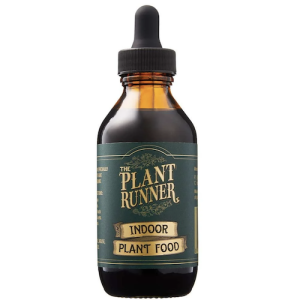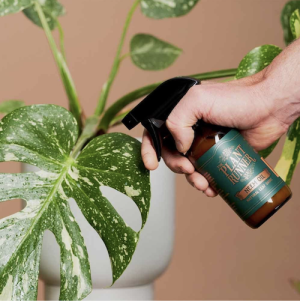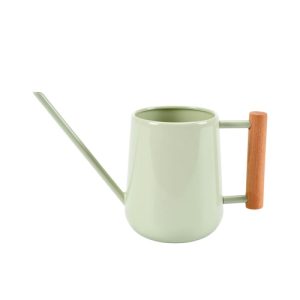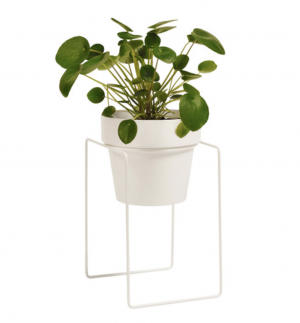If there’s one thing I successfully do each winter, it’s kill at least a few indoor plants. I’m keen to have a zero fatalities this year and have been researching all the tricks to keep your plants alive over winter. Because I know I’m not alone with this struggle, I’m sharing the top plant care tricks with you!
Related article: 12 reasons why you’re killing your indoor plants: How to keep indoor plants alive
Related article: Top 20 hard to kill indoor plants

1. Adjust your watering schedule
Without a doubt, the most common way we kill our indoor plants is by over- or under-watering them. Usually, it’s a case of overwatering — especially in winter.
While in summer, most plants require at least weekly watering, in winter this should be reduced to fortnightly or even less frequently. The best way to check if your plant needs a drink is to put your finger in the soil. If it’s dry 2-3 centimeters below the surface, it’s time to give them a small amount of water. Alternatively, you can buy a water meter like the one I’ve got in the picture below.
Most important is that your plants don’t stay sitting in water because this can lead to root rot, fungus, mould and other issues.
Remember, even though your plants are inside, the majority of house plants go dormant over the cooler months and don’t need much water or fertiliser.

2. Find them a comfortable home
The second biggest killer of indoor plants is not finding them a comfortable home. Most plants are sensitive to extreme temperatures. So between cool drafts and scorching hot heaters, it can be tricky to find them an ideal spot to wait out the winter months.
Be mindful to move your indoor plants away from windowsills where they can get too cold overnight or from directly near heaters or below heating vents. You want to find them a place that has moderate temperatures and still sufficient natural light.
Shop our plant care essentials
3. Remove dust build up
When I started ‘cleaning’ my indoor plants, I saw a massive improvement in their overall health and wellbeing. It’s probably the best trick I’ve learnt to keep my plants alive and thriving.
By wiping down the leaves of your plant, you’re giving it the best chance to absorb sunlight and turn it into energy/food for it to survive.
There are many ways you can clean your plants. Some people will put them in the bath or shower, and give them a gentle shower. Others use a damp towel to wipe dust from the leaves. Personally, I use a neem oil spray (you can find a link to neem oil in the shop carousel above), which I spray directly onto the plant and then wipe away. The benefit of neem oil is that it’s also a natural repellant to pests and other nasties that can harm your plant.

4. Increase humidity
This tip is particularly important if you have ferns or other plants that enjoy more humid environments.
Running your heater over winter will reduce humidity in the air, which can cause stress on your plants as they cannot draw water in through their roots at a rate equal to loss through their leaves.
There are plenty of ways you can increase humidity for plants, including:
- moving your plants to the bathroom where daily showers increase humidity (just make sure you have enough natural light in your bathroom)
- using a spray bottle on mist setting to mist your plants weekly
- placing a tray of water below your plants but make sure your plants do not touch the water or this will lead to root rot
- using humidifier machines.
5. Insufficient natural light
We mentioned above that sunlight is how your plants create food and over winter when the days are shorter, your plants may not be getting sufficient natural light. You may need to move your plants to a sunnier spot of the home but if you don’t have this option because you live in an apartment with limited windows, you may want to look into getting some grow lights like the one in the shop carousel above.
Grow lights emit light primarily in the blue and red wavelengths, which aid a plant’s growth. Blue light stimulates the formation of chlorophyll (crucial in the process of plant photosynthesis, which aids healthy leaf and stem growth), and the red light promotes germination, root growth and bulb development.
If you enjoyed this article on how to keep your plants alive in winter, you may also like to read the Top 12 reasons you’re killing your indoor plants. And to easily find these tips when you need them, be sure to save the image below to your Pinterest account.
More plant care articles here
Photography by Thorson Photography
Disclaimer: This post was first published in June 2020 and continues to be updated with latest information. It contains some affiliate links. This means that when you click on a link and purchase something from that site, we may make a small commission at no extra cost to you.










